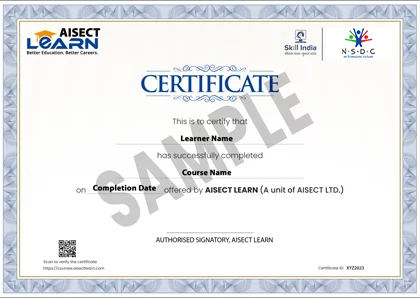Python for Data Science Internship (Self-Paced)
Blended
Fee: ₹1,499
 Dr. Priti Maheshwary | Professor Future Skills Academy
Dr. Priti Maheshwary | Professor Future Skills Academy
The Internship Course is designed to equip students with comprehensive knowledge and practical skills in Python programming, data science, and entrepreneurship. The course is divided into two main segments, Python for Data Science and Entrepreneurship Skills. Students will delve into essential programming concepts, data manipulation, analysis tools, and advanced data visualization techniques. Simultaneously, the entrepreneurship segment will guide students through the fundamentals of entrepreneurship, problem-solution fit canvas, and business model canvas, fostering a robust entrepreneurial mindset.
Objectives
The objectives and skills you will acquire through this transformative experience.
Understand and apply key concepts in data science and Python programming.
Manipulate and analyze data using Python's powerful libraries.
Create advanced data visualizations to communicate insights effectively.
Develop a strong foundation in entrepreneurship, including problem identification, solution formulation, and business model development.
Personalize and apply entrepreneurial tools like the problem-solution fit canvas and the business model canvas to real-world scenarios.
What Will You Learn
Intro to Data Science, Python Essentials, Data Manipulation and Analysis Tools, Data Analysis and Statistics, Advanced Python - Pandas, Data Visualization in Python, Introduction to Entrepreneurship, Problem-Solution Fit Canvas, Business Model Canvas, Value Proposition, Customer Segments and Relationships, Key Resources, Activities, and Partnerships, Revenue Streams and Cost Structure
Skills you will gain
Curriculum
-
Python Internship
-
1 Intro What is Data Science?
-
2 Real Life Examples with Applications
-
3 Data Scientist Job roles and responsibilities
-
4 The Most Promising Job of the 21st Century
-
5 Machine Learning vs. Data Science vs. AI
-
-
Python Essentials Introduction
-
1 Python Introduction
-
2 Follow this Installation Guide of Anaconda Navigator
-
3 Jupyter Notebook Interface
-
4 How to Open, Save and Rename a file
-
5 Variables and Data Types
-
6 Python Strings
-
7 Loops (Conditional)
-
8 Loops (Iterative while)
-
9 Loops (Iterative For)
-
10 Python Functions (Built in, Lambda, User defined functions)
-
11 Lists
-
12 Tuples
-
13 Sets
-
14 Dictionaries
-
-
Data Manipulation and Data Analysis Tools
-
1 Numpy Arrays in Python
-
2 Three Dimensional Arrays Indexing and slicing
-
3 Matrices
-
4 Pandas in Python
-
5 Importing CSV, Excel Files
-
6 Exporting CSV file
-
-
Python Data Analysis, Statistics
-
1 Basic Descriptive Statistics with Numpy and Applying Statistical Functions on Matrices
-
2 Linear Algebra with NumPy
-
3 Numpy Random Numbers
-
4 Probability Distributions using NumPy
-
5 Normality Test with SciPy
-
-
Advanced Python - Pandas
-
1 Pandas Data Frames
-
2 Querying Data in Pandas
-
3 Data Aggregation with Pandas Data Frames Aggregation with Pandas Data Frames
-
4 Concatenating and Appending Data Frames
-
5 Joining Data Frames
-
6 Statistics with Pandas Data Frames
-
7 Handling Missing Data
-
8 Pivot Tables
-
9 Plotting in 5.9 Plotting in PandasPandas
-
-
Data Visualialization in Python
-
1 The Matplotlib Package
-
2 Basic Matplotlib Plots
-
3 Logarithmic Plots
-
4 Scatter Plots
-
5 Three Dimensional Plots
-
6 Lag Plots
-
7 Autocorrelation Plots
-
8 Plot.ly
-
-
Entrepreneurship Skills
-
1 Introduction to Entrepreneurship, Entrepreneurs and Entrepreneurial Competencies
-
2 Use of Problem Solution Fit Canvas
-
3 Basics of the problem solution fit canvas
-
4 Personalize The Canvas
-
5 What to write in "The Need-Problems" Box
-
6 What to write in Customer Segment Box
-
7 What to Write in "Triggers to Act Box
-
8 What to Write in "Emotions Before/After" box
-
9 What to write in "Available Solutions" Box
-
10 What to write in "Customer Limitations"
-
11 What to Write in "The Need-Behavior" Box
-
12 What to write in "Channels & Behavior" Box
-
13 What to Write in "Problem" box
-
14 What to Write in "Solutions" Box
-
15 Closing remarks
-
16 What to write in a "Problems That You Are Solving" box
-
17 Why Product Market Fit Canvas is Important
-
18 Basic No How of Product Market Fit
-
19 Let's personalize our Canvas
-
20 Step One of Product Market Fit Canv2.20 Step One of Product Market Fit Canvasas
-
21 Step two of Product Market Fit Canvas
-
22 Step Three of Product Market Fit Canvas
-
23 Step Four of Product Market Fit Canvas
-
23 Step Four of Product Market Fit Canvas
-
25 Step Six of Product Market Fit Canvas
-
26 Step Seven of Product Market Fit Canvas
-
27 Step Eight of Key Matrices
-
28 Conclusion and Afterthoughts
-
39 Introduction of Business Model Canvas
-
30 Why Business Model Canvas is important ?
-
31 Personalization of Business Model Canvas
-
32 Value Proposition
-
33 Customer Segments
-
34 Customer Relationship
-
35 Channels
-
36 Key Resources2.37 Key Resources
-
37 Key Partnership
-
38 Key Activities
-
39 Cost Stream
-
40 Use of Business Process Canvas
-
41 Revenue Stream
-
-
2 Live Sessions
-
Project Python, Entrepreneurship and Communication Skills Internship
Instructor

Dr. Priti Maheshwary
Professor Future Skills AcademyPresently working at Future Skill Academy. Involved in Computer Science and Engineering for over 20 years in higher education and training. Her career has included various software development projects, teaching, research and administrative roles. She enjoys teaching and looking into how to improve student learning experience. Published around 50 research papers in refereed journals and conferences, 7 book chapters, 6 Patents. 8 PhD thesis completed under her guidance in the field of Internet of Things, Smart Cities, Ubiquitous Computing, Wireless Sensor Network, VANET, Image Processing specialized in Satellite Images, AI/ML & Deep Learning, and Cyber Security. I have also done more than 10 projects in the field of Research and Consultancy.
Shareable Certificate

Other Details
Python, Entrepreneurship and Communication Skills Internship
 Start Date
Start Date  Credentials
Credentials Associated Courses
 Duration:
Duration:
 Course Credit:
Course Credit:
 Certification Body:
Certification Body:
 Language:
Language:
 Access:
Access:
 Shareable Certificate:
Shareable Certificate:
